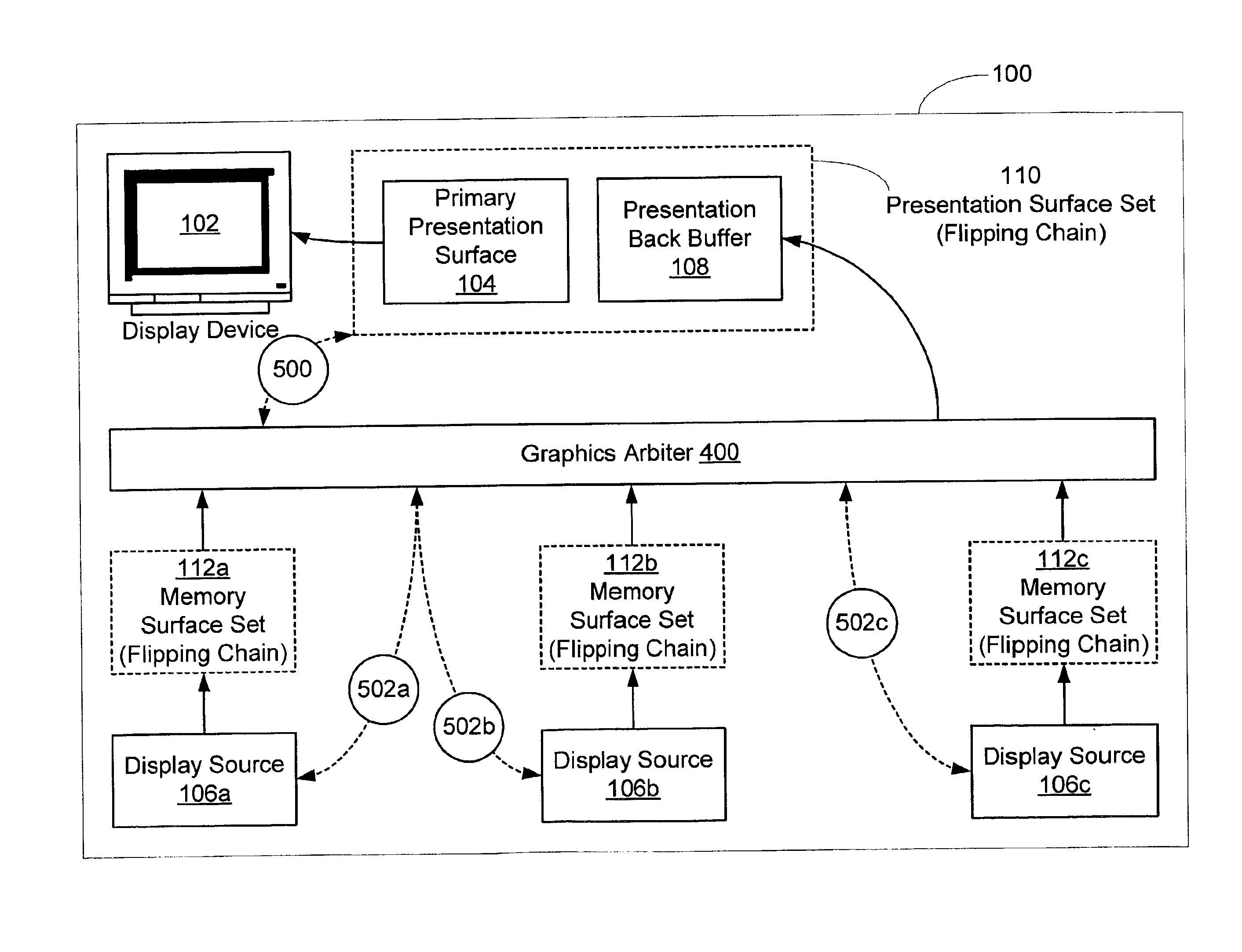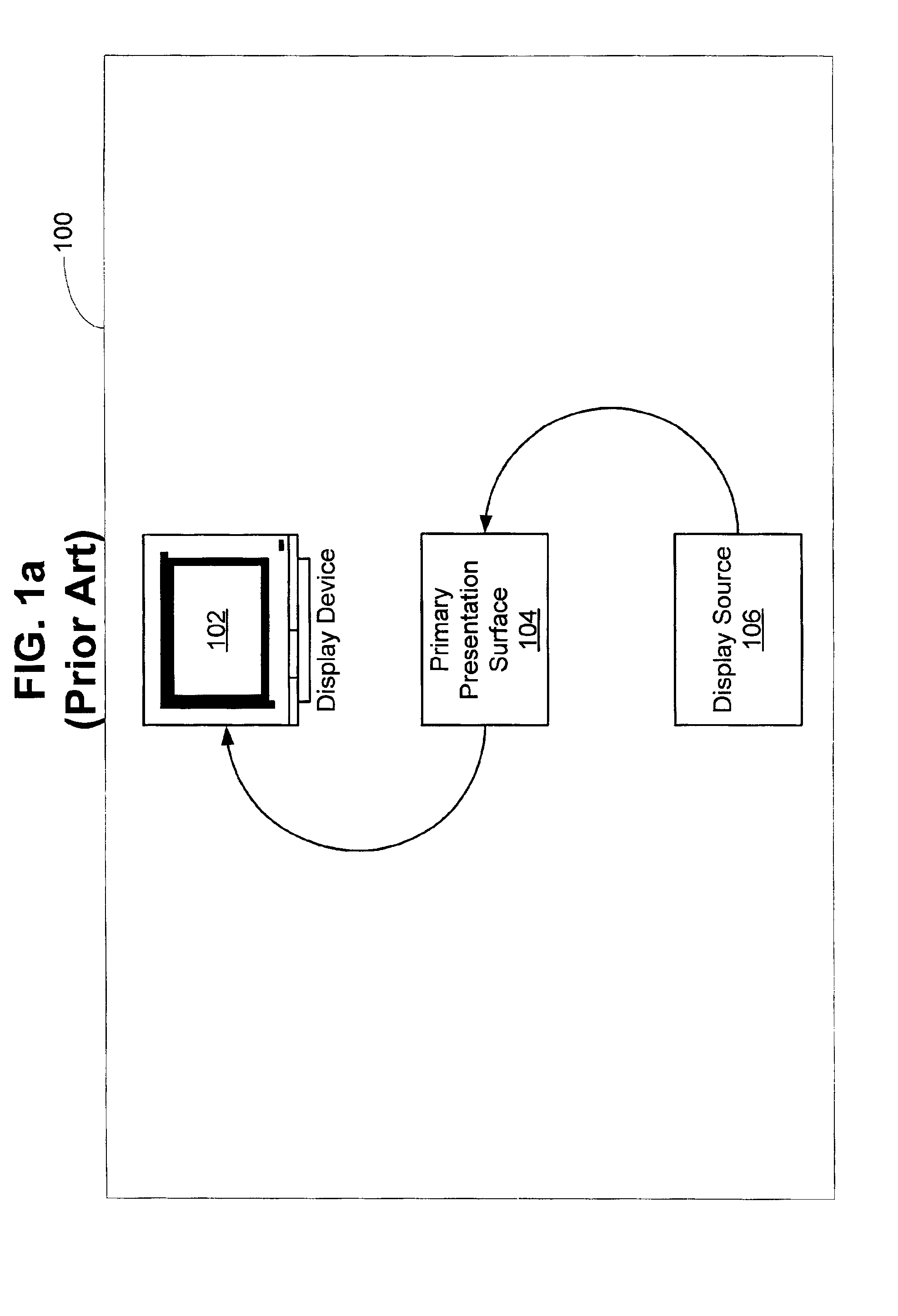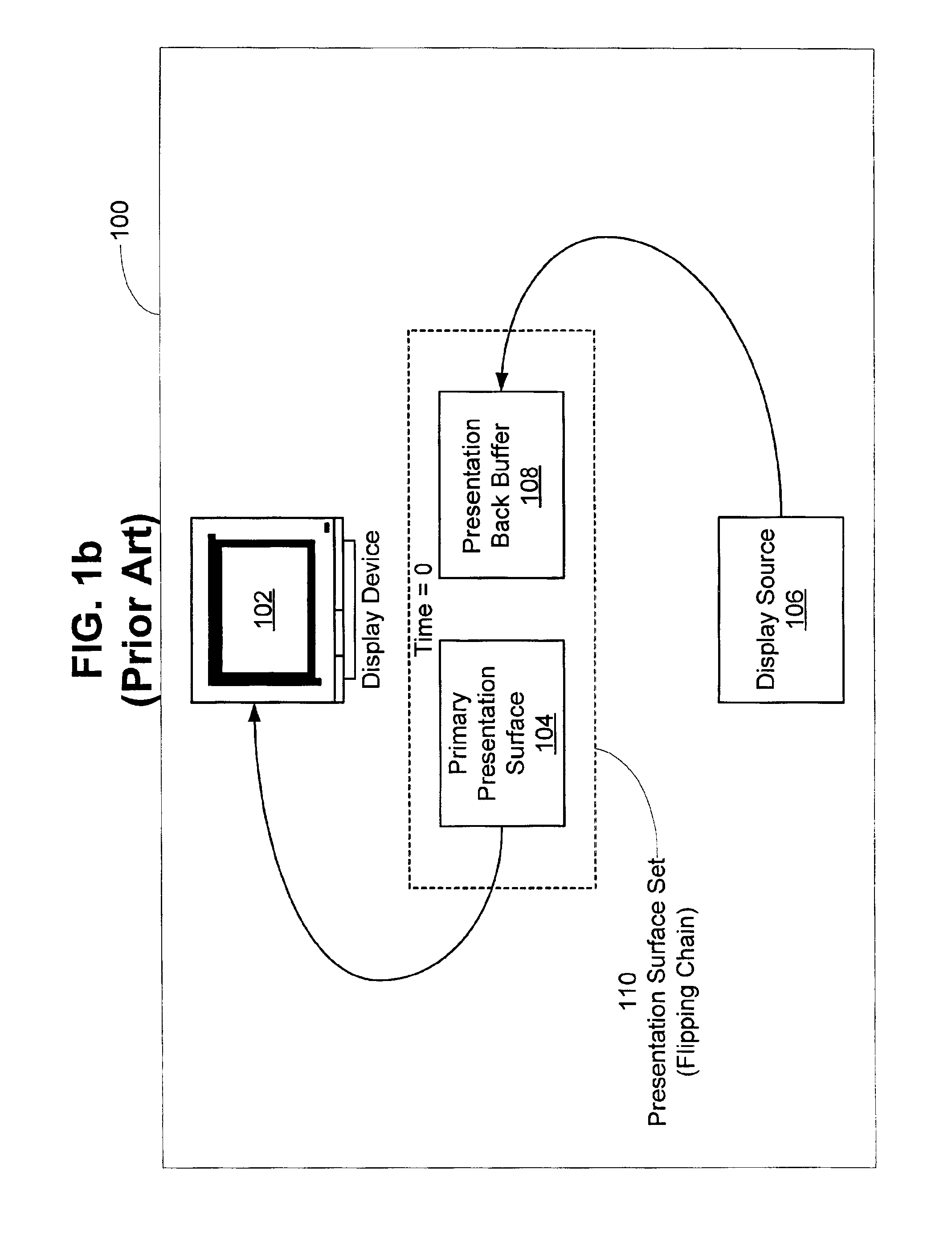Methods and systems for displaying animated graphics on a computing device
a computing device and animation technology, applied in the field of displaying animated visual information, can solve the problems of increasing the demands for intensive display processing, high cost of computing resources, and high consumption of visual information, so as to reduce resource waste, improve output quality, and save display resources
- Summary
- Abstract
- Description
- Claims
- Application Information
AI Technical Summary
Benefits of technology
Problems solved by technology
Method used
Image
Examples
Embodiment Construction
[0025]Turning to the drawings, wherein like reference numerals refer to like elements, the invention is illustrated as being implemented in a suitable computing environment. The following description is based on embodiments of the invention and should not be taken as limiting the invention with regard to alternative embodiments that are not explicitly described herein. Section I presents background information on how video frames are typically produced by applications and then presented to display screens. Section II presents an exemplary computing environment in which the invention may run. Section III describes an intelligent interface (a graphics arbiter) operating between the display sources and the display device. Section IV presents an expanded discussion of a few features enabled by the intelligent interface approach. Section V describes the augmented primary surface. Section VI presents an exemplary interface to the graphics arbiter.
[0026]In the description that follows, the...
PUM
 Login to View More
Login to View More Abstract
Description
Claims
Application Information
 Login to View More
Login to View More - R&D
- Intellectual Property
- Life Sciences
- Materials
- Tech Scout
- Unparalleled Data Quality
- Higher Quality Content
- 60% Fewer Hallucinations
Browse by: Latest US Patents, China's latest patents, Technical Efficacy Thesaurus, Application Domain, Technology Topic, Popular Technical Reports.
© 2025 PatSnap. All rights reserved.Legal|Privacy policy|Modern Slavery Act Transparency Statement|Sitemap|About US| Contact US: help@patsnap.com



